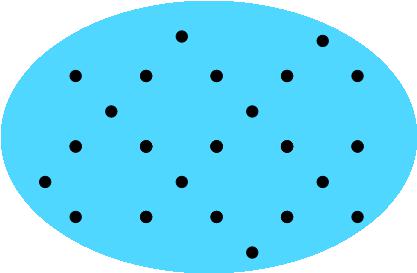Or search by topic
Number and algebra
Geometry and measure
Probability and statistics
Working mathematically
Advanced mathematics
For younger learners
How Would We Count?



- Problem
- Student Solutions
- Teachers' Resources
How Would We Count?
How Would We Count? printable sheet
How many dots?

How did you count them?
What about your friends, how did each of them count the dots?
Ask your teacher for some other pictures of dots for you to count and share ideas about how you counted them.
Why do this problem?
Possible approach
Display the 'blue' image so that everyone can see it - it may be helpful to use a whiteboard, if one is available. The aim is to encourage the children to 'say' what is in their heads about the counting such as,
'I can see three lines. One is a line of six and one is a line of five and there's a line of four and then there is these other ones in between.'
They may well see something different to what you see. Be prepared for surprises!
A valuable discussion can then follow with the children saying what they think about others' 'say' about their counting.
Here are some further examples that can be used in a similar way .doc pdf
Key questions
How many?
Possible extension
A handful of pebbles scattered on to a tray can lead to similar questions and discussions.
The children could then go on to try counting other things that they come across in the real world such as seeds on a sunflower, patterns on clothing, flowers in a flower-bed or spots on different animals' skin.
Possible support
Related Collections
You may also like
Let's Investigate Triangles
Vincent and Tara are making triangles with the class construction set. They have a pile of strips of different lengths. How many different triangles can they make?

